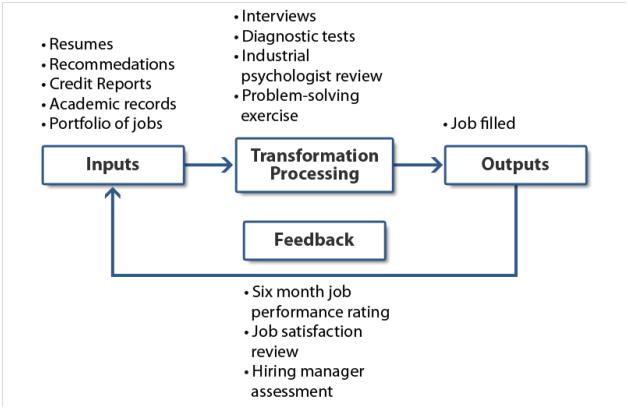The Input-Output (IPO) Model is a functional graph that identifies the inputs, outputs, and required processing tasks required to transform inputs into outputs. The model is sometimes configured to include any storage that might happen in the process as well. The inputs represent the flow of data and materials into the process from the outside. The processing step includes all tasks required to effect a transformation of the inputs. The outputs are the data and materials flowing out of the transformation process.
Example: A small engineering firm believes there are problems with its hiring process. Several of the junior engineers that have been hired remained at the firm for less than one year. This is a considerable cost to the firm, since recruiting and training new engineers is time consuming and expensive. The human resources manager decides to put together a group of people with extensive experience hiring new engineers. One of their first tasks is to produce an input-output model of the hiring process. They generate the following.
Used correctly, the IPO Model offers an efficient way to both analyze and document the critical aspects of a transformation process.
Visit our “Six Sigma Methodology” section for more insight on implementing Six Sigma methodology and tools.

